Sand Bedding for Chicken Coops: Why I’ll Never Switch Back
Switching to sand bedding keeps your coop cleaner, drier, and easier to maintain. Learn which sand to use, how deep, and how to keep it fresh.
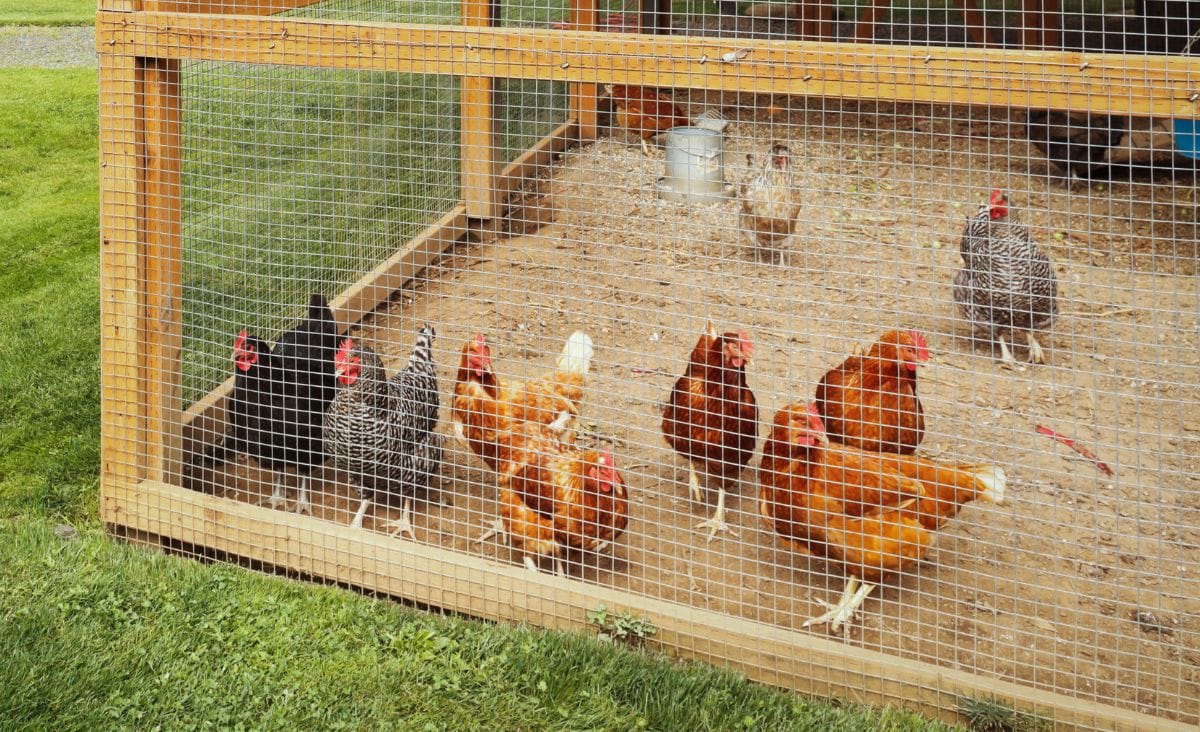
When I first started raising chickens, I never gave much thought to what went on the floor of the coop. Pine shavings? Sure. Straw? Why not. But then the mud came. The smell came. And suddenly every trip to the water station felt like balancing on a slip-n-slide.
That’s when I discovered sand. Honest truth? Switching to sand bedding in my chicken coop was one of the best decisions I’ve ever made for my birds—and for my sanity. Clean feet, no stench, and a coop that finally felt like I had my act together.
If you’ve been wondering whether sand is a good bedding choice, which type to buy, or how to keep it working year-round, here’s what I’ve figured out since switching to sand back in 2013.
Why Sand Bedding Works So Well
Here’s the kicker: sand solves problems that traditional bedding creates. Pine shavings get soggy, straw molds, and everything starts smelling like a barnyard in July. Sand, on the other hand, dries out droppings, controls odor, and actually keeps chickens’ feet clean.
It also saves on feed because pellets sit right on top instead of disappearing into a deep litter. I’ll admit, I like that it makes the coop look tidier too. A clean, dry coop just feels better to walk into.
The Big Pros (And Why I’ll Never Switch Back)
Sand keeps the coop fresh by drying droppings quickly and preventing ammonia buildup. My hens had cleaner feet, fewer scrapes and sores (bumblefoot), and just looked more comfortable walking around. They also dust bathe in it constantly, which doubles as natural mite control.
Another bonus is climate. Sand stays cooler in the heat and doesn’t trap dampness in the winter. When it does come time to swap some out, you don’t have to haul the whole load to a compost pile all at once—that’s usually too much material in one go. I just toss some into the compost here and there so it doesn’t swamp the pile, and it helps break up all that heavy, clumpy mess. I’ve also used it to fill in muddy spots in the yard, add drainage to garden beds, or improve pathways around the homestead. If you have clay soil, mixing small amounts of sand over time helps loosen it and improve aeration.
If you’re new to building a hot, balanced pile, Composting for Beginners: The Ultimate Starter Guide shows you how to layer browns and greens so small additions of sand don’t stall the process.
Choosing the Right Sand for Your Coop
Not all sand is created equal. The kind you pick makes or breaks how well this system works.
Bank run sand is my top choice because it has a natural mix of fine and coarse particles. The pebbles keep it from compacting and help with drainage—perfect if you live somewhere wet. Construction sand is similar, affordable, and easy to find. All-purpose sand will work in a pinch, though its uniform grains tend to pack down faster.
Then there’s play sand. Don’t do it. It’s too fine, it turns to sludge when wet, and the dust can cause respiratory problems. Skip it and save yourself the frustration.
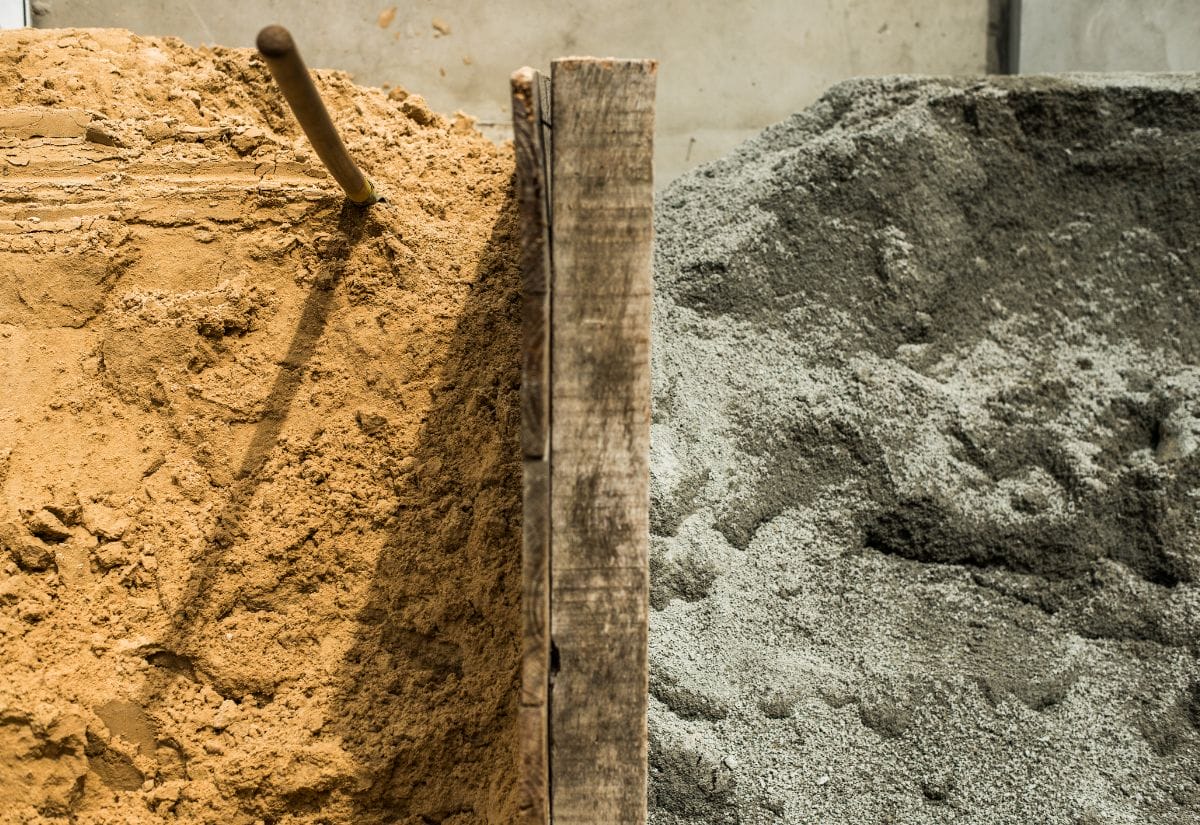
Tip: Buy sand locally if you can. Quarries, landscape suppliers, and sometimes even garden centers carry the good stuff. Delivery usually costs less than trying to haul it in your own truck. If you can’t find a local source, you might track down smaller bags of construction sand online—but honestly, if you need a full coop’s worth, buying local is almost always the better deal.
How Deep Should Sand Be?
Depth depends on your coop setup. In a raised coop with a plywood floor, three or four inches of sand is enough. On the ground or in an enclosed run, go six to eight inches so moisture drains properly. If your coop sits on soggy soil, lay down a few inches of gravel first. It makes a huge difference in preventing muck.
Cleaning and Maintenance
This is where sand really shines. I rigged up a stall rake with some hardware cloth, and now it works like a giant litter scoop. Cleaning takes me maybe two minutes, tops.
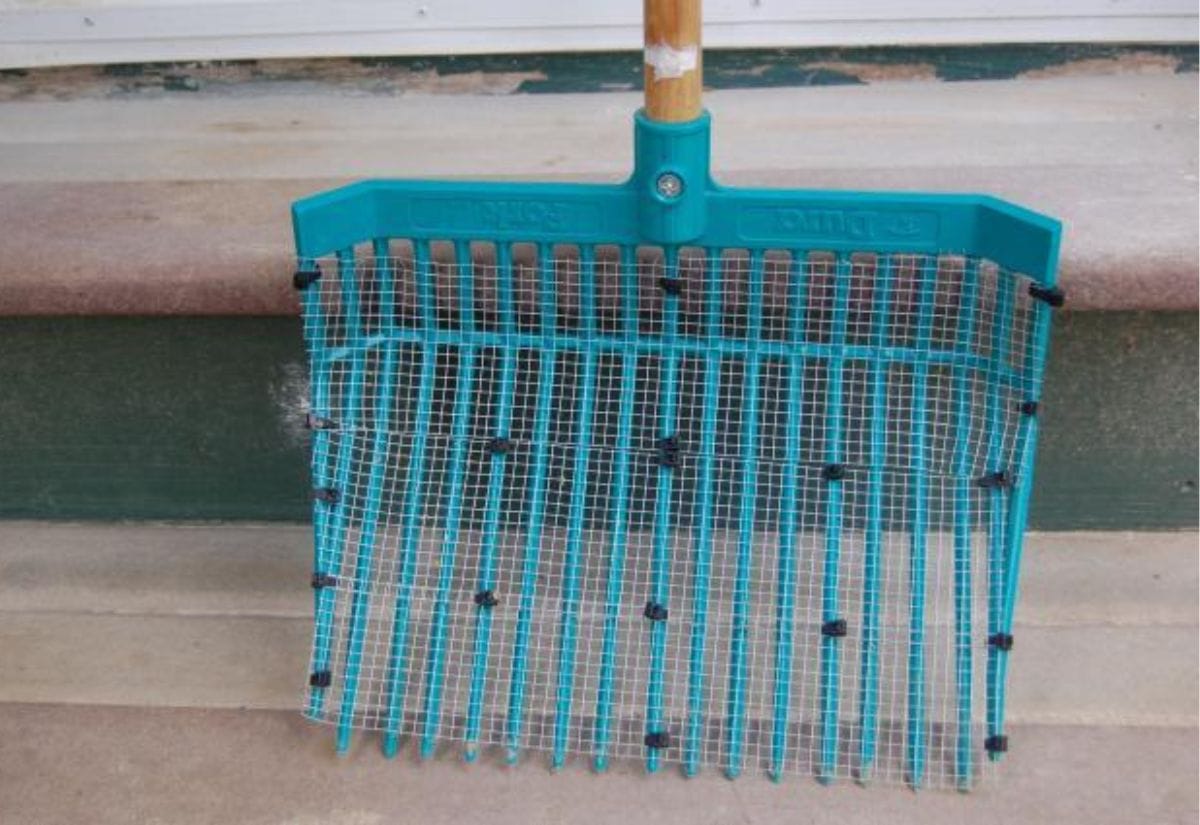
Seasonally, I sprinkle in wood ash during the winter or food-grade DE in the summer. Both help with pests. A couple of times a year, I freshen things up with pelletized lime or Sweet PDZ and add more sand where it’s packed down. Then, once a year, I do a full cleanout and start fresh.
If you’re setting up or tweaking your space, Roost to Run: The Elements of Perfect Chicken Coop Design walks you through smart roost placement, floor plans, and ventilation so your sand system works even better long-term.
Pro tip: Sand only works if you keep up with it. Neglect it, and it’ll smell just like any other bedding.
Troubleshooting Common Problems
If odor creeps in, it usually means the sand is too shallow or not draining. Adding depth—or refreshing under the roosts more often—solves it. In wet climates, sand can compact; raking helps, or you can lay down gravel before adding more.
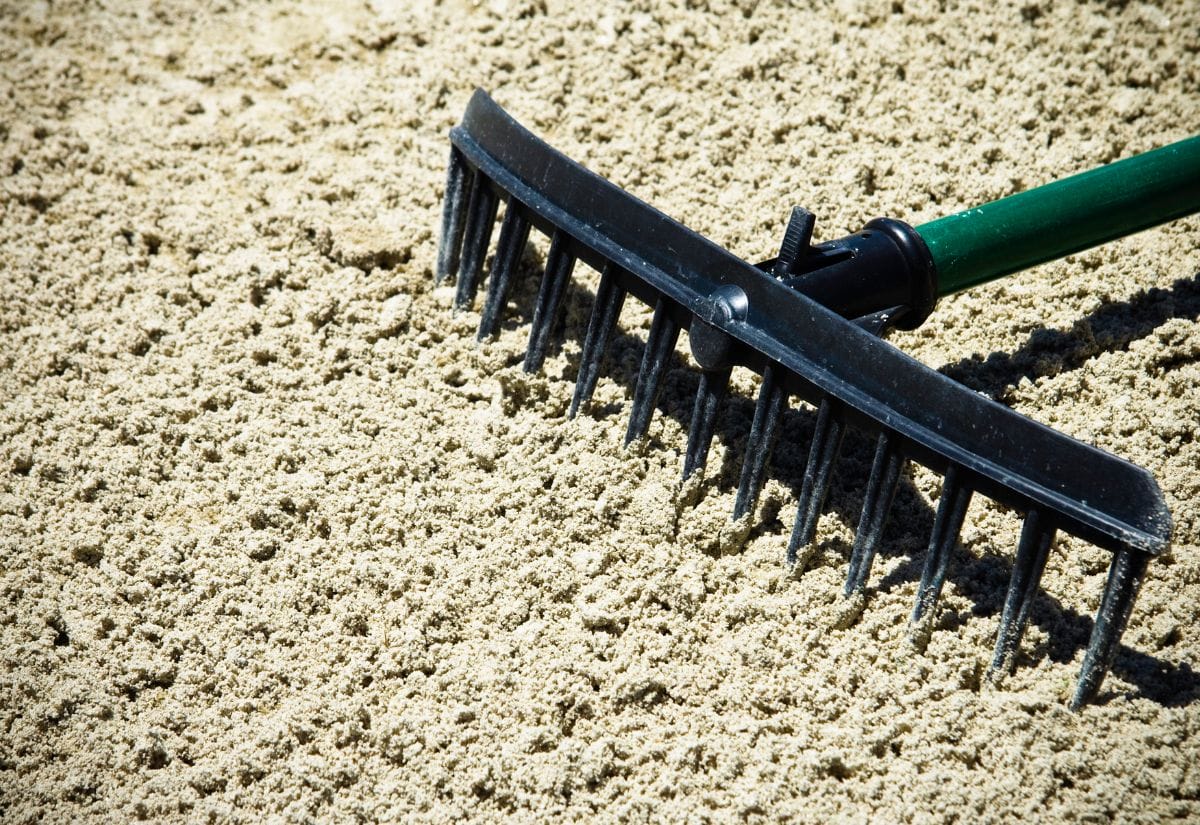
Extreme weather poses its own challenges. In summer, sand can heat up in direct sun, so make sure part of the run is shaded. In winter, the surface layer may harden, but a deeper base keeps it from freezing solid.
Pests love damp bedding, so as long as you keep the sand dry, you’ll dodge most of those headaches. I keep a bag of food-grade DE on hand and a bucket of Sweet PDZ for freshening the run, but use it sparingly.
For a whole-yard strategy that keeps hens safer day and night, see Best Way to Protect Chickens from Predators in Your Backyard—it covers hardware cloth sizes, dig-proof skirts, and lighting that actually deters prowlers.
Using Sand in a Brooder
Sand works here too, though I wait a few days before exposing chicks directly. I usually cover it with paper towels for the first 2–3 days so the chicks learn what’s food and what’s not. Once they’ve got the hang of it, the towels come off and the sand helps hold heat, keeps water cleaner, and doubles as grit when I start offering little treats.
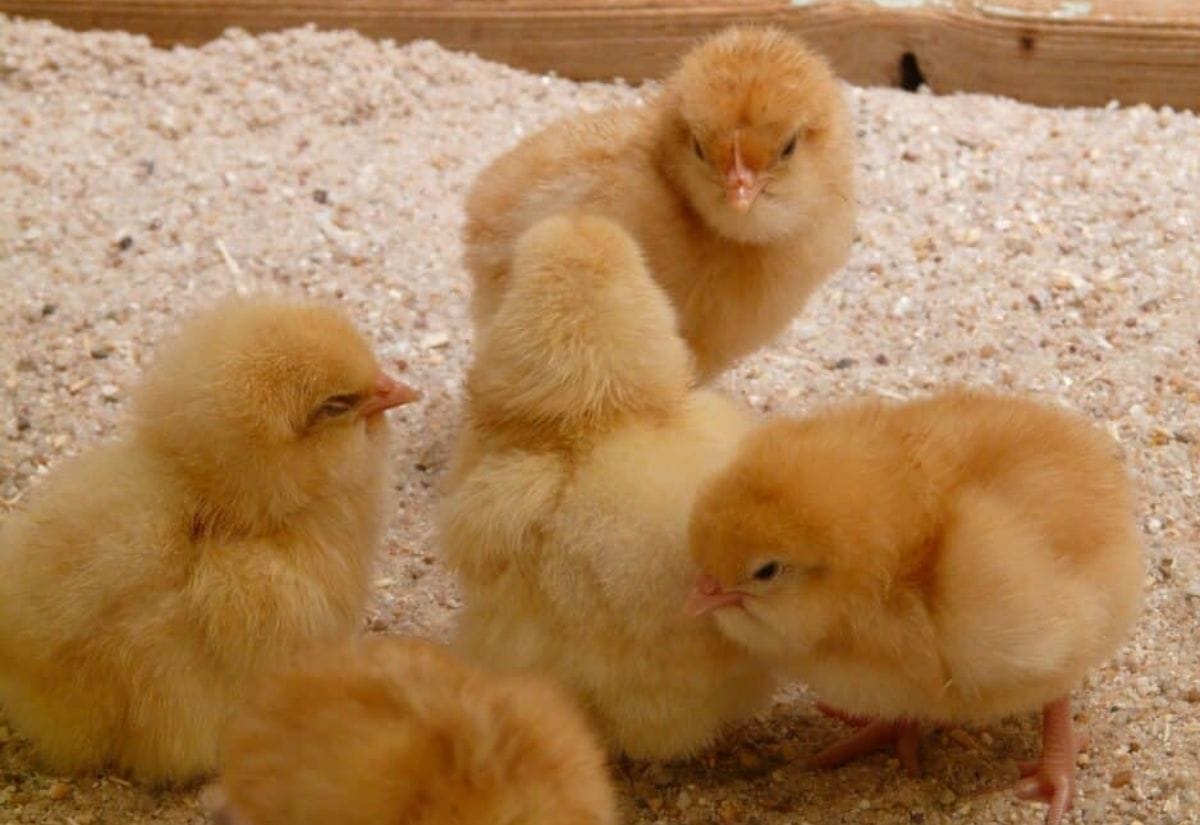
Frequently Asked Questions About Sand Bedding
People ask me the same questions about sand over and over, so let’s run through the big ones. These answers come from years of messy experiments and more than a few stinky cleanouts.
Save this guide to your chicken keeping board so you’ll have it handy when you’re ready to switch to sand bedding.
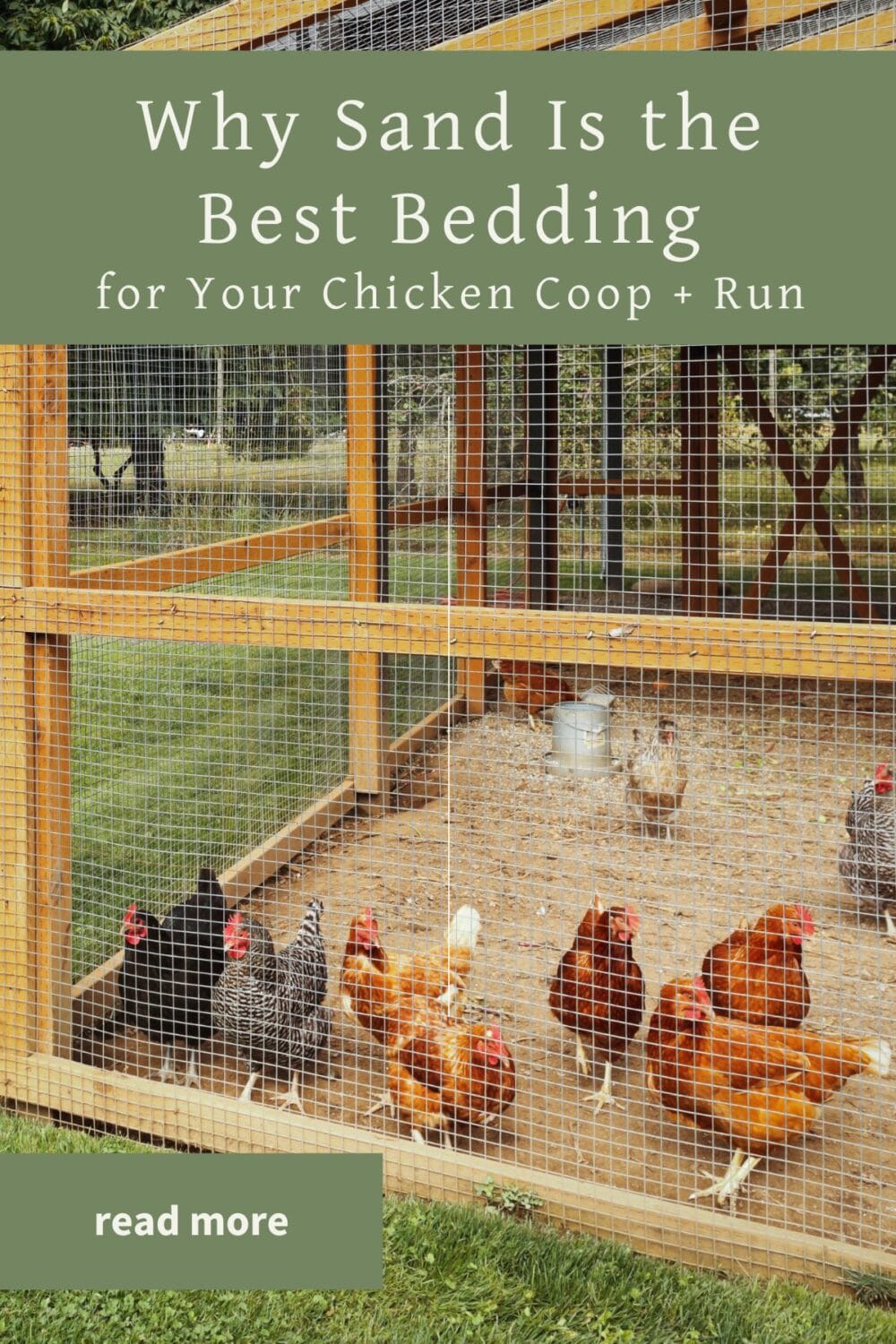
Switching to sand bedding made chicken keeping easier, cleaner, and—honestly—much less smelly for me. It cuts down on mud, keeps my birds healthier, and costs less in the long run than shavings or straw.
If you’re tired of slogging through mud and holding your nose every time you open the coop, give sand a shot. I don’t think you’ll want to go back. And if you’ve already tried it, I’d love to hear how it worked for you—share your experience in the comments or save this post to Pinterest so you can come back to it later.

Can I use sand and small pebbles from my downhill river for the chicken coop/dust bath? Yes the water s so clean and my tap water is spring water with minerals from our well. We live Vermont. 🙂 or do I have to buy sterilized sand from the store for my new 5 weeks old RIR baby chicks? Thank you for any advices’ yourvtpal
That should work just fine.
I am new to chickens, so I am definitely learning as I go. I have 8 chickens and 2 ducks. Our coop is raised with a linoleum covered wood floor and I am currently using hay. The coop leads to a large covered run. We placed large stone, topped with gravel, topped with sand. Our 2 ducks are currently using this space until their separate run is complete. I am noticing that the sand is staying very wet (because of the ducks). I have been unable to scoop the poo, so I have been raking it in. I have noticed a mildew smell. Is the sand meant to remain dry and is scooping preferred to raking it in? Can I remove the hay from the coop and place sand over the linoleum floor?
Raking in isn’t a great idea because it can cause some stink issues if done too often. You’re better off sacrificing a bit of the sand and using a small shovel to remove the poo while the ducks are in there. As far as the coop, you can certainly use sand in there as well. That’s what we do.
Hi Jessica!
I have a new coop and run and I have read all the great things about sand, so I am going to use it. I went to Lowe’s yesterday, and they had different kinds of sand. They had play sand, which everyone says, do not use. They had one called All Purpose in a 50 # bag. Is that the correct one to get? If so, we are going to get about ten bags to start and see how it all goes. Thank you so much for your time!
All Purpose works well. I’m not sure how big your coop is, but in the future it might be cheaper to get your sand from a quarry.
I’ve had 6 chickens for just over a year now and sand has worked very very well. It’s easy to clean the tray below roosts (cat litter scooper). The sand absorbs moisture from the droppings so scooping is a breeze and there is very little smell. I scoop almost every morning and it takes 2-3 minutes max. I also have sand in the nesting boxes. 95% of the time the eggs are very clean and the chickens rarely poop in the boxes. The sand stays cool in the summer and absorbs the body heat of the chickens so stays warmer in the cool weather (Portland, OR). Excessive dust has not been a problem nor has excessive odor.
So glad to hear it’s working out well for you 🙂
I live near Portland. Would you mind sharing where you bought the sand?
Thanks!
I got mine from K&W in Bridgton.
Also from Portland, you can buy sand by the yard for $30 at any bark dust yard or most nurseries have it, a lot of the sand for huge concrete projects around the country comes from Portland Oregon out of the willamette river “rose city sand” a full pickup load is 2 yards about $60
I was wondering about mixing DE with the sand in the coop? Is that a good idea? I have a chicken tractor with a raised coop and run. I was thinking of using sand in the coop with DE and putting PDZ in the rum. I will move the run about every week or so. I will have six chickens in the area. What do you think?
Thanks so much
Katie S
I have two hens and my coop has a dirt ground. When it rains it gets really muddy in there. What can I put in the pen to help so my girls can stay dry. I have hay all over the ground, that help a little bit but I know there other things that I can do. Need your advice on how to do it better. I am a first time chicken lover. Thank you for your support.
Hay is one of those things that puts a bandaid on the problem, but can make the end result even worse (cleaning up all that soggy hay – not fun). 2-3″ of gravel with sand on top should offer you a permanent solution.
I have a coop that has a concrete floor – Would I just put the sand on top of the concrete or would I put down gravel first? My run is dirt so would I put gravel first or just the sand?
I would recommend adding gravel to both. It won’t do any harm if you add it and it’s not needed. It’s a headache to add it after the fact if you are having drainage issues.
I’ve recently moved and am building a new coop, Previously I used straw in the coop and run . What is the best for a run/coop straw, pine shavings in the coop only , sand ? Thanks
I personally love sand for all of it. It makes cleanup a breeze.
I am just building my coop! I will have a wood floor and then want to lay down linoleum with sand on top. Will this be ok? Also in my runs should I do all sand with no grass? I thought they’d eat the grass??? I’m new to chickens so bear with me please!
Linoleum is wise if you have a wood floor. It will protect it from rotting. As far as the run, the chickens will happily eat the grass, but once it’s gone it will be gone forever. That will leave you with a rock solid mucky base. I’d let them eat the grass, but plan to put sand down once the grass is gone.
new to chickens…. we are building a run with bare ground. There is some grass. Is it best once chick are big enough to leave brooder, to let them eat the grass or start with sand over the dirt and grass?
I put down linoleum when we first got our coop which is on blocks with wood floor, I didn’t want the floor to rot out. The chickens destroyed the linoleum over night the first night.
I put down linoleum when we first got our chicken house which is on blocks with wood floor, I didn’t want the floor to rot out. The chickens destroyed the linoleum over night the first night. I was shocked to say the least. At the time we had 12 chickens and were using bedding. Just a caution if you have quite a few chickens. Probably work perfectly for small coops. I will have to think about the sand. Right now we have hay using the deep litter method. There is no smell and we have 30 chickens, about 30 ducks, and 2 goats that use the same chicken house.
Hi there, would the sand work for duck’s coops too? Thank you
Yes, it’s great for ducks. If my ducks were kept separately from my chickens I would use a larger grit sand only because the ducks get the finer sand stuck to their feet and then bring it into their kiddie pool. I think larger grit would cut down on that. Standing water is a huge problem with ducks, but sand takes care of that.
I have a polish rooster which in the beginning the other chickens used to peck at him now every time I go to feed them he attempts to nips at my boots and doesn’t let me enter into the coop please help I really don’t want to destroy him
Have you checked out this post Rosemarie: https://104homestead.com/why-rooster-being-jerk/ The sooner you can get him under control, the better. Not all roosters can be trained to see you as alpha, but the earlier you work with him, the more likely he will understand his place.
I’m very new to raising chickens, but hopefully, you will find this helpful. I have a rooster who just about 6 weeks ago began posturing and showing mild aggression. I filled a spray bottle with water and would spray him softly (by pulling sprayer slowly) on his chest while also making a “ch” sound with every spray. The sensation caused by the stream of water was strange to him and he would walk away every time. I did this for about a week and then stopped using the spray bottle and began only making the “ch” sound if his behavior appeared to be iffy. I can now go into the yard without any worry because he no longer seems interested in challenging me.
Great advice Lynn! I walk around with mine under my arm when he’s behaving badly.
You know it was the oddest thing. I just recently got a rooster. Handsome fellow. But he is an ass. I hadn’t had roosters since I was little, only hens, and the roos would always chase us down no matter how much we kicked them. This time I thought I’d try a different method. Basically, every time he ran at me, or tried to show he was boss, I grabbed him!! And carried him around for about 10 minutes each time as I worked around the yard. Totally stopped harassing me. Every now and then (every 2 weeks or so) he starts up again, but then I just carry him around again and he sees me as Alpha boss lady soon after (minutes after). *if you’re wondering how I caught an angry roo unharmed, I’d stick my shoe out, wait for him to jump on it, then pin him to the ground while he was distracted 🙂 🙂 It’s a gentle approach and it worked.
That’s similar to the way we dealt with our roosters. We are roosterless right now and not feeling too sad about it. We may stay that way for a while.
We use a large, telescoping handled kitty litter scooper to scoop Chix poop! It works well!
I may have missed it but if is it ok to make a wooden floored coop and put the sand in it? Or is it better to have the sand directly on the ground/gravel? My coop is going to be placed in a permanent location and not really in an area with drain issues.
Mine is on wood and it hasn’t done any damage. I have plastic between the floor and the sand. Directly on the ground or on a concrete base is better than wood though.
I have 5 chickens…their main coup is on concrete with bark on the top and the pen and run area are also covered with bark…I’m in England and we’ve had loads of rain making everywhere boggy and smelly. As soon as we have a dry weekend we are going to remove all the bark and replace it. Will sand be ok when we get a lot of rain?
It will work great. If your coop is located where water pools, you might want to lay a few inches of crushed rock first so the water can filter through and drain properly.
Great idea! Thanks. I have 4 ducks instead of chickens. Do you think the sand bedding would be good for them as well? They sleep in a little 5′ X 4′ area at night. During the day they are in a natural floored (dirt) large, closed-in coop.
Sand is great with ducks in the fact that it doesn’t pool when they trudge through with wet feet (as they often do). The only thing is that duck poo isn’t quite a scoopable as chicken poo. It still works for us though with our mixed flock.
You mentioned impaction in small chicks, is that not a problem with the adults as well? I am making plans for my chicken coop and would love to use sand, but I am worried when their food falls on the ground or I toss treats to them that they will be eating sand all the time.
Unless you are tossing really wet or sticky treats, adults can handle the sand injection better than chicks. The smaller grains pass right through their system and they save the larger grains to use as grit.
I have used regular sand for years with no problem whatsoever. I wasn’t able to find construction grade around here so I got a truck load of regular sand that I use inside and outside of my coop. It’s been about 7 years and have not had a problem with it. Clean up is a breeze, add some barn lime and sprinkle some DE once a week also keeps flies down and everything healthy. I put down a double layer of heavy plastic and added a good amount of sand. The run was already on the sandy side so I just added even more and I hardly need to clean it out as it does just dry up. I do highly recommend sand over other material too.
I have had chickens for about 3 years and am always looking for easier ways to do things. I have read about sand several times and it seems like a good idea for many reasons so l asked my vet, yes chicken vet, and she said she would not recommend using sand because they could inhale it and get respiratory infections. Still sounds like a good idea and am thinking seriously about using it, getting really tired of the mud and the resulting mess. One question, why did you lay down the plastic? Wouldn’t that inhibit the drainage?
I only lay down plastic in the coop because the floor of the coop is wood. If you have a stone or dirt floor, this step wouldn’t be necessary.
Research has been done about dust levels for various bedding options and sand had lower dust levels AFTER being installed. During installation it can produce a good amount of dust, but once it place, the birds create less dust with sand than they do with organic materials that are constantly breaking down. Also, sand dust contains less harmful materials, whereas organic materials may contain mold spores.
My husband is building a new coop, hopefully it will be done before the snow flys. Could I use the construction sand in the coop and run for the first time at this time of the year? I thought I read somewhere not to do it in the winter. I’m using Koop Clean in the coop part of my old coop now but would like to switch with the new coop. Just curious thanks.
We use sand year-round (and we live in Maine). I’ve never had a problem. It reduces the risk of frostbite and amazingly keeps the floor 2 degrees warmer than ambient temperature.
Have had chickens for many years, have used straw, ( not good )…shavings ( better ) …but this year started the sand, construction grade, very easy to clean the girls love it..BUT..the dust is awful. Made the stall rake and my husband made me a small rake to scoop the dropping’s on to the stall rake to try to keep some of the dust down. That has been my only con on the sand, did lightly spray with the garden hose to keep some dust down… Live in Illinois and have 32 wonderful ladies….
Chickens are new to me and I’ve been trying to research everything. I remain confused on the bedding.
I read recently that recent studies have shown that sand can contain and maintain a far greater E. coli infestation. The book I’m reading also expresses concern that chicken might accidentally eat their own poo that has been covered in sand.
Sand seems so ideal but the above information is giving me pause. Do you have problems with them eating their poo?
Kentucky University Cooperative Extension has been doing a lot of research about using sand as a bedding. Here’s a snippet from their research:
You can see the whole report here. Some of the writers that are against the use of sand share research, but don’t share links to confirm the validity.
As far as my personal experience, I have been raising my chickens on sand (in freezing cold Maine) for four years successfully. My flock is both happy and healthy. Although they eat some of the larger particles of sand as grit, I’ve never seen them poo.
I use sand in my coop/run and I love it! So do my girls.
My hen house has a cement floor with a drain in the center. Shall I put the gravel down about 2″ and then builder’s sand about 4″ deep on top? It shouldn’t get wet except for spills or chicken splashing in the waterer. Sounds like a better idea than straw.
Yes, I would still use gravel just in case you ever experienced odd flooding. I think you are going to love the sand setup. It really is grand. I pulled my sand this spring to wash and sanitize it (first time in 3 years) and I switched to wood chips and hay so I could add organic matter to my growing gardens. I hate this organic material. It’s been so rainy and the ducks and chickens make a mess of it. It also caused my new pullets to lay their eggs on the floor, which I’ve never dealt with before. As soon as the garden is done for the season, the organic material bedding is out of here and I’m back to my sand.
Jessica, how do you wash and sanitize the sand?
Once a year (usually during the summer) I shovel it out onto a tarp in the driveway. I hose it down really good and let it bake in the sun for a few days (sort of stirring it so the sun can work it’s magic).
new to chickens…. we are building a run with bare ground. There is some grass. Is it best once chick are big enough to leave brooder, to let them eat the grass or start with sand over the dirt and grass?
Certainly let them enjoy the grass while it lasts. They’ll thank you for it.
that seems like a lot of sand to put on tarps! 6-8″ of sand in my 10×10 coop… that just seems crazy.i is there an easier way to clean the sand? do you ever just hose it down?
If you have plenty of drainage (and somewhere to put your chickens) you can certainly hose it down.
My chicks are ready to move out to the coop. I have 2 quarries nearby and neither has sand that looks like the ones on the chicken chick website. Everything is more sandy. Home depot/lowes the same. I’m confused as to how much rock material I really need. Any help would be appreciated.
Where I live, they call is construction sand or bank run sand. Mostly, you want to look for sand that has some variety of size to it. You want the larger sizes to be about the size of grit. Most quarries should offer it as a base for placing cement blocks, though the name of it may be different.
I use construction sand left from building my home, as the builder to move to backyard instead of spreading on lawn. Love the results in coop and run they are secure in for the night. I scoop out poop every morning while collecting eggs.
Glad to hear it’s working well for you 🙂
Do you use the sand in the nesting box also?
I don’t (I use hay), but I am considering using sand in the lower boxes. I have two hens with chicks that sleep in the boxes and they get so gross so quickly. Sand would be a easy to clean in the morning before everyone starts laying for the day.
I can’t wait to get started with my chicken coup and sand.Thanks for this tip
You are so welcome!
I have used crushed limestone (rock screenings) as platform for my coop and extended that into the run. It seems to serve the same purpose as sand and drains well. Could I use that in the coop as an alternative to construction sand?
I’m not too familiar with rock screenings. So long is it isn’t insanely dusty, I imagine it would work just fine.
I am currently in the process of drawing up plans for a coop redesign, as we are battling having placed a prefab coop directly on the ground forour first go at chicken keeping. The girls are healthy; I free range them daily because the coop is a mucky mess and difficult to cleanandshovelout.
My question for you is this, in your run is just the 6-8″ of sand placed over the former grass? No other base under the sand, correct? Just looking for insight. Thank you.
If you don’t have standing water, you should be fine just adding the sand. If you have drainage issues, you might want to consider laying down gravel first. Standing water and chicken poo is a bad combination.
We just completed building our coop and run. I used 3/4″ gravel 9-16″ deep (our property is sloped but he run is leveled by a retaining wall) then landscape fabric under 15 – 8″ concrete sand. Working like a dream.
I am so glad to hear it!